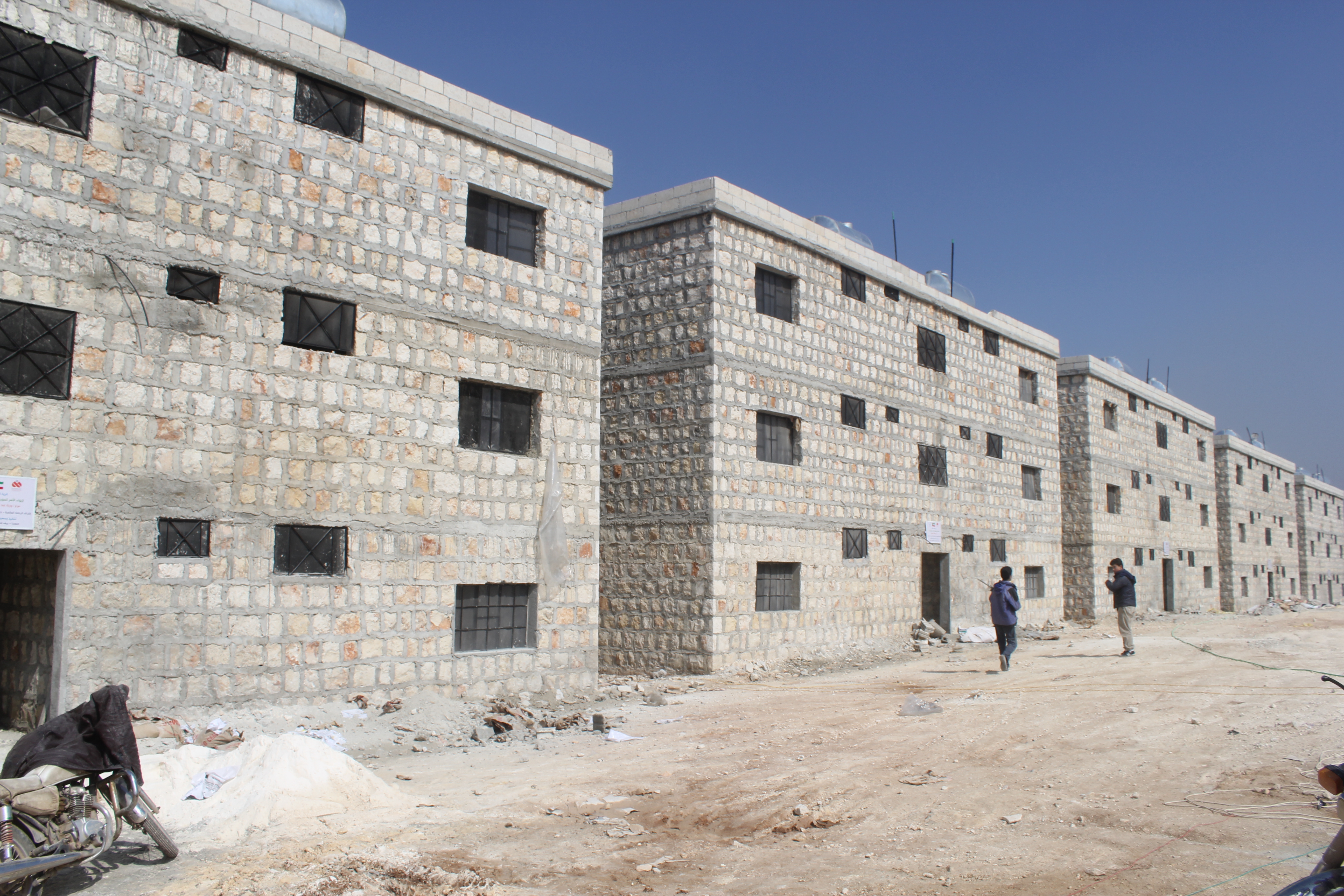Housing Syria’s Displaced and Vulnerable

Abu Abdalla and his family decided it was time to flee their home town of Kfar Nabuda after it was bombed by government aircraft. Scores of civilians were killed and wounded in a relentless series of attacks.

“The fierce raids waged by Russian and government air forces on Hama’s northern countryside forced us to abandon our houses so as to keep our children safe,” he said.
“We made our way to the Syrian-Turkish border and took refuge in a camp, living in a small tent. However conditions were extremely harsh, especially during winter, so we didn’t stay there for long,” the 45 year-old said.
Abu Abdallah heard that housing units for internally displaced people (IDPs) were being built in Idlib’s southern countryside, so decided to head in that direction.
As soon as he arrived at the village of Has and signed a declaration that his family was homeless, he was allocated a flat in the Rahma residential project.
This newly-built village will house 250 families in seven three-storey housing units, each containing eight flats. Abu Abdalla’s new home consisted of one room, a kitchen and a bathroom.
Project director Omar al-Dani told Damascus Bureau that the buildings were being built for IDPs from Hama and Latakia’s countryside. The project was being implemented by the Al-Wafa Relief Association under the supervision of the Rahma International organisation.
“Upon completion, the project will have cost an excess of 400,000 US dollars,” said 51 year-old al-Dani.
“Hundreds of IDPs have already submitted applications to be housed. Those most in need will be selected.”
According to Abdalla al-Kanjo, a builder on the site, the allocated plot of land is not big enough for parks or playgrounds, but trees have been planted on the streets.
“There are no shops or local markets in the village, but these can be found in the nearby villages of Has and Kafruma,” he continued.
“The project has been highly beneficial to our local community as it created more than 100 jobs, which were quickly filled by those who had suffered extended periods of unemployment.”
The Rahma village is relatively safe due to the lack of any military presence in the area.
Nevertheless, according to Abbas al-Kamel, head of the Has local council, government forces have targeted such sites in the past.
Al Kamel noted that an attack on = the Mud village built by the Qatar Red Crescent in Idlib’s countryside had killed eight people and wounded scores; a large section of the village was also damaged.
“It is the responsibility of the humanitarian agencies we cooperate with to condemn the shelling of these sites,” he said.
“Government forces target them to make sure that civilians do not have safe havens to settle down in, thereby forcing them into successive displacement.”
Umm Yasin, 39, has experienced repeated displacement.
“My husband fought in the Free Syria Army. He was killed in a battle and I was forced to flee my home due to the heavy fighting,” she said.
“My children and I settled in the Obeen camp in Latakia’s countryside. When the camp was bombed we were forced to flee yet again,” she continued.
This time Umm Yasin fled to Has. She applied for a flat in the Rahmah village where she now lives along with her four children.
Ahmad al-Salim is the pseudonym of a Damascus Bureau contributor from Idlib, Syria.
Read the Arabic version of this article here
